The SMT adaptation was a hobby project. The MFOS designs are the property of SynthCube.
If you want to buy PCB for the MFOS synths, please visit musicfromouterspace.com
Here comes my next conversion of Ray’s classic analog synthesizer, the Weird Sound Generator!
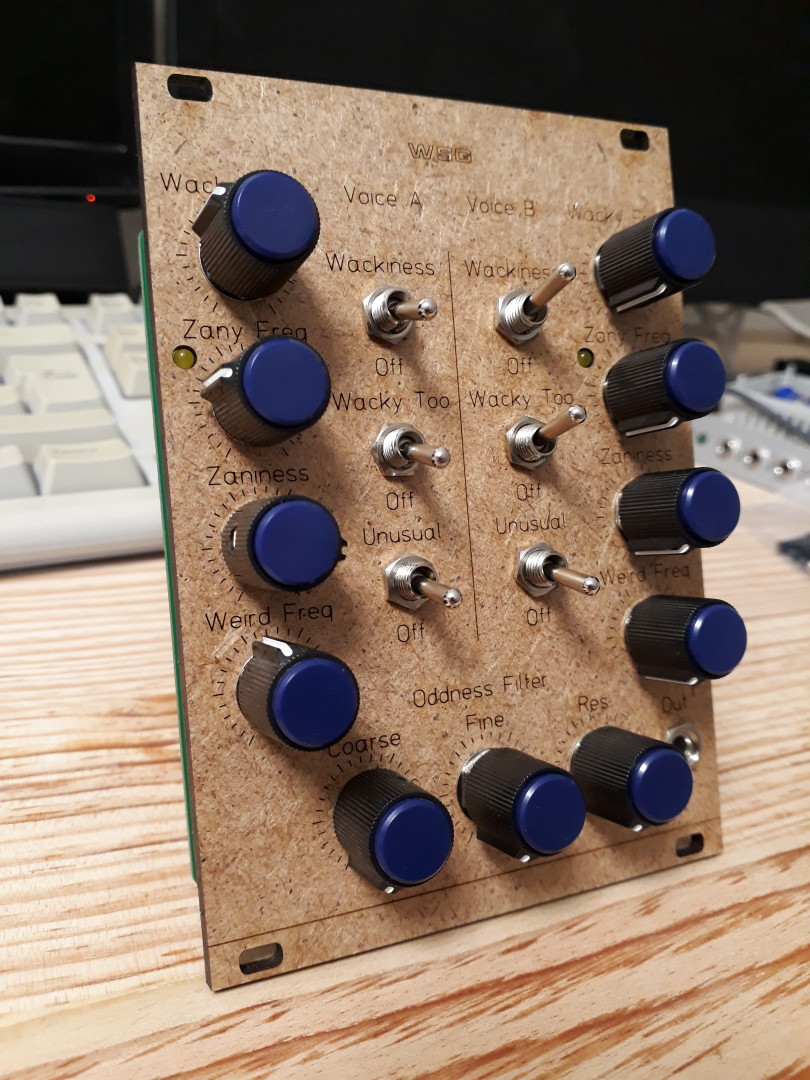
This is the same process as for my previous SMT/Eurorack conversion of the Sound Lab Mini-Synth. The circuit is identical to the original, including component references.
General description
The WSG is a simple drone-weird-thing for fun and a lot of sounds. There’s just one output and no CV input. Its simplicity makes it a very good candidate for beginners.
The WSG contains 2 voices and one filter.
Each Voice contains 3 oscillators. Zany is a LFO. The two others are the drones:Weird and Wacky. Weird can be modulated by the LFO Zany (through Zaniness control potentiometer) and also can be “interfered” by Wacky if Wackiness switch is activated. Unusual switch changes the Zany modulation of Weird from square to almost triangle.
Voice A and B share the exact same behavior.
The circuits
I redrawn and rearranged the schematic layout.
Ray’s schematics are sometimes convoluted and hard to read (very long wires, lot of crossings etc.)
Besides the fact that I needed to redraw the schematics into KiCad before laying out the new PCB, redrawing them gave me the opportunity to better understand the circuits.
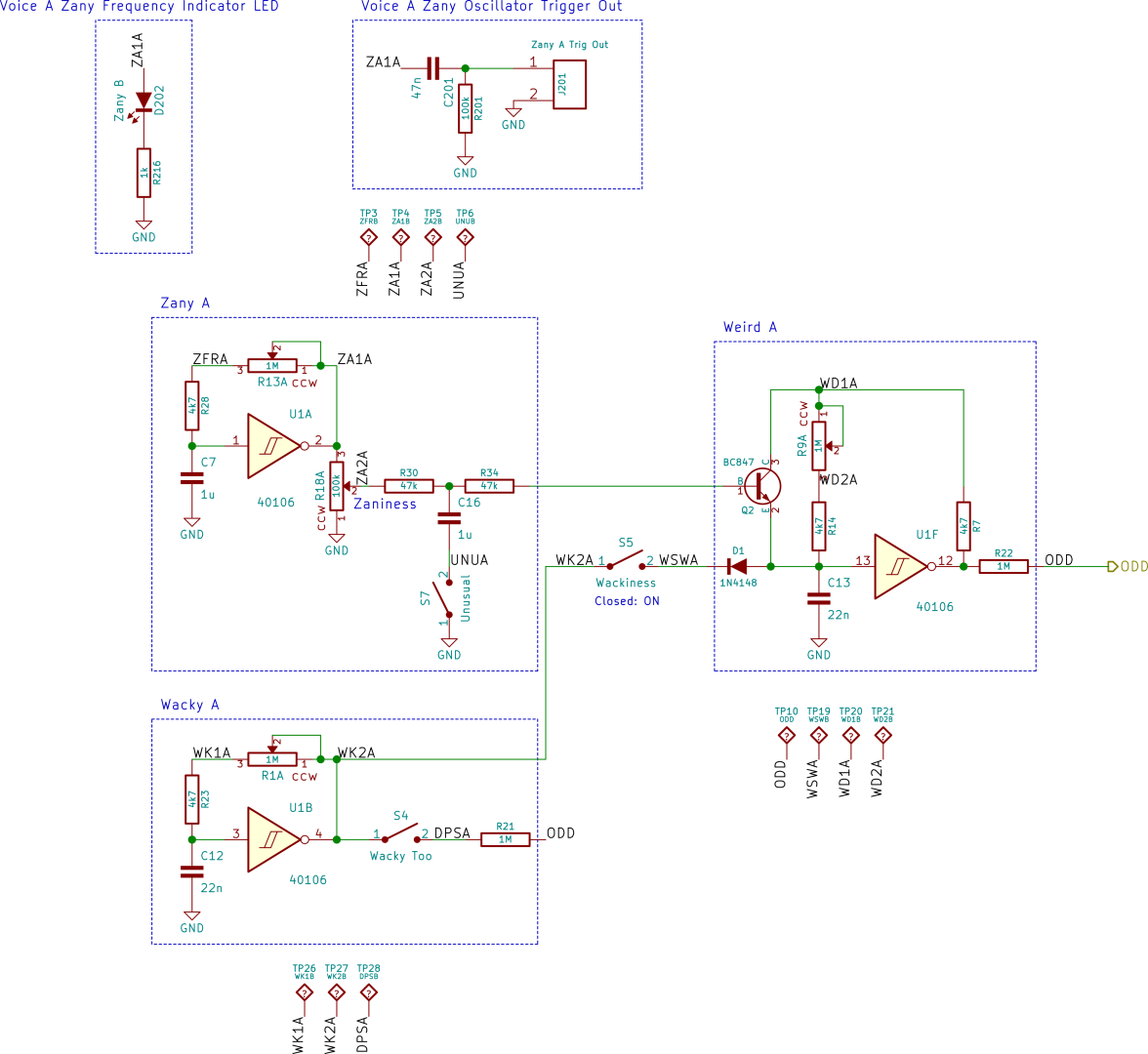
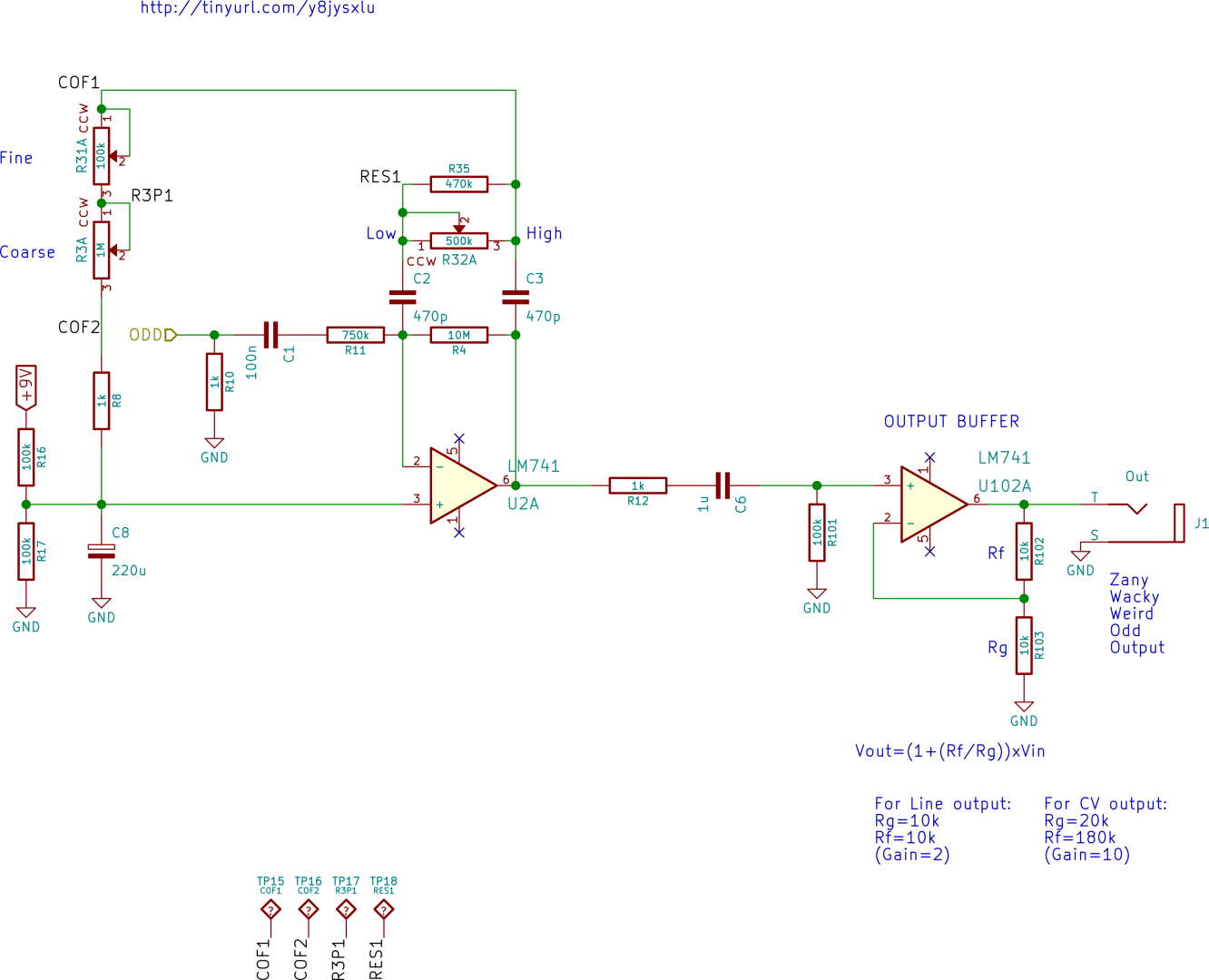
The next circuit is the Low Pass Filter. It only uses one Op Amp. The second Op Amp is for output amplification. It might be necessary to increase slightly the output level by modifying Rb/Rf values. See annotations on schematics for possible values.
Redrawn MFOS WSG schematics for SMT conversion (wsg-1.1-20181009.pdf)
BOM
Front Panel
The front panel is 3U x 18HP: 128.40mm x 91.10mm. Recommended thickness: 2mm.
Front panel layout and dimensions (PDF)
The panel layout is somewhat different from the classic one. I chose to put the controls in a vertical arrangement. While it keeps the initial spirit, the new arrangement results in a very compact 18HP wide only Eurorack module.
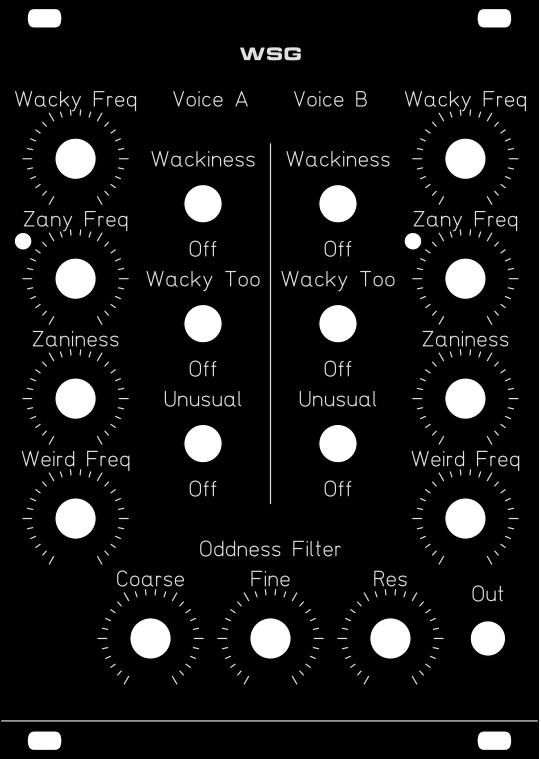
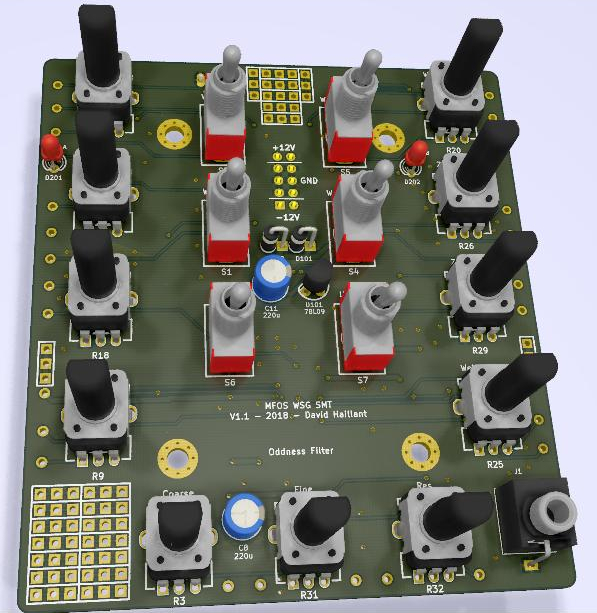
One big advantage over the initial version is the complete lack of wiring chore. Everything sits on one PCB. Surface mount components are located on the bottom side.
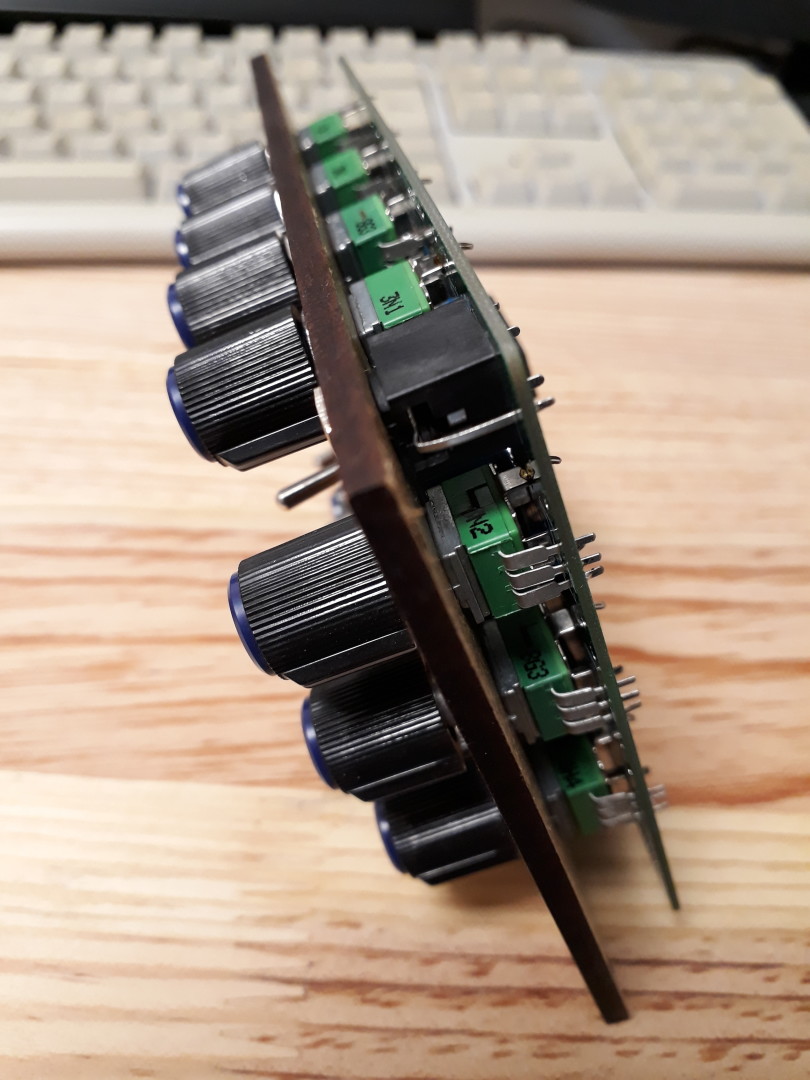
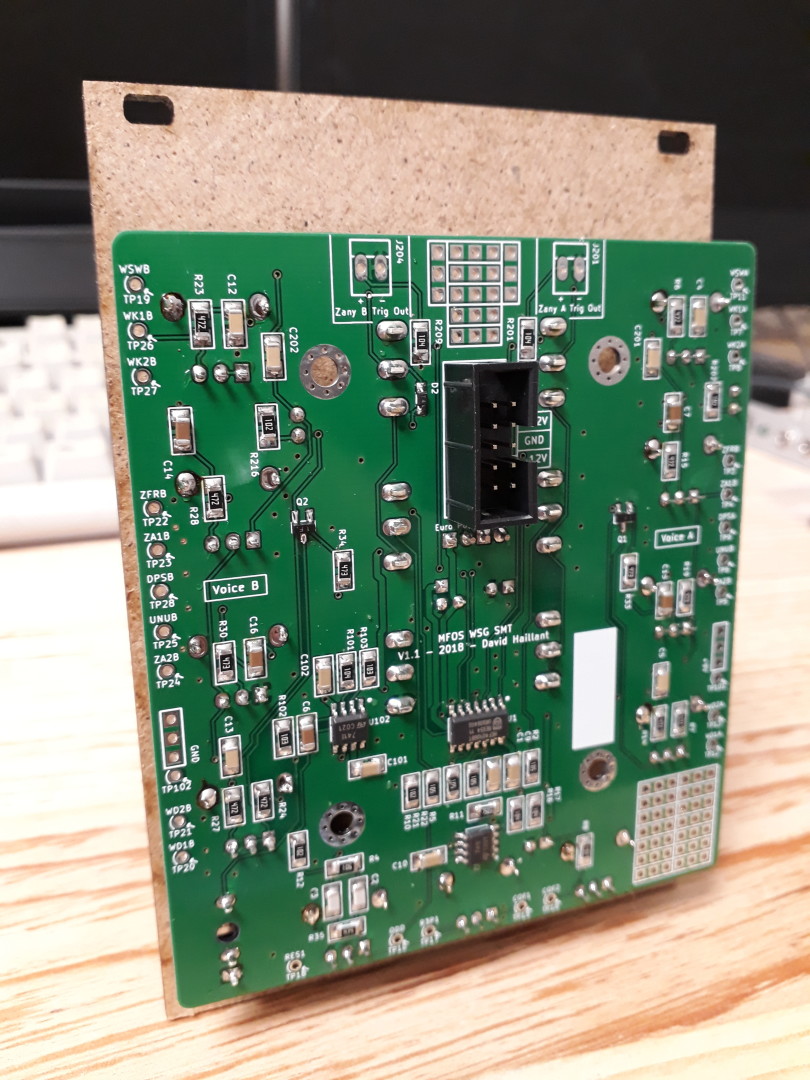
There’s only few components in this project, which makes it nice for a fun and relatively easy first step into the Surface Mount Technology.
Two kludge areas have been added for your own safety.
All the important signals are available and labelled on PCB sides, allowing you to poke around and ease your circuit bending needs.
Mods
More!
For more descriptions about the circuits, and real “Weirdsoundology” studies, please visit the original WSG pages by Ray Wilson.
Hi! I was wondering about the output voltage of this. You say it’s CV level, you mean -5v to +5v or audio modular level -10v to +10v?
Hi!
The output level can be modified through R102/R103… With the suggested values, you should get -5/+5V if I’m recalling well (don’t have a unit to measure the voltage).
Hello,
I was having an issue. When I have nothing plugged into the output all my oscillators work fine. However, when I plug a cable in and turn on “Wackiness A” switch I lose the voice A oscillator. The output jack I used is a TRS and the only cable I have is TR. Do you think this could be the problem? Any help would be appreciated.
Thank you
Hello,
Do you have the same problem on voice B?
Is Wacky A the only oscillator having an issue?
Please contact me by mail, it will be easier to communicate.
Thank you!
David